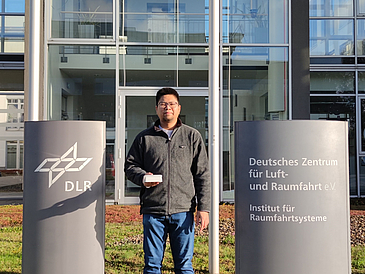On 23rd September 2024, I had the opportunity to irradiate numerous Martian regolith constituents, thanks to the excellent cooperation of Dr.-Ing. Patric Seefeldt and Erik Klein from Deutsches Zentrum für Luft- und Raumfahrt e.V. (DLR Bremen).
Martian regolith is estimated to have defect-rich and highly concentrated amorphous phases due to an extreme weathering by mechanical impact from extra-terrestrial objects as well as the solar wind radiation. While investigation on the impact of mechanical destruction have been extensively carried out in my doctoral studies, an initial experiment of the proton radiation is conducted here. The overall simulation would mimic the Martian weathering process, leading to representative samples to shed light on the feasibilities of in-situ resource utilization (ISRU) process. The bulk/local structural differences between prior- and post-radiation stage are the main object of this investigation.
The post-radiation samples are analyzed with Raman spectroscopy and X-ray powder diffraction characterization techniques. The vibrational features from optical phonons are clearly distinguishable between the prior- and post-radiation samples. The proton radiation has successfully changed the electronic structure as indicated by the increase of its Raman background. Moreover, global red shifts of 1-3 cm−1 are also observed, often accompanied by peak-broadening (ΔFWHM ≤ 5 cm−1). The peak shifting and broadening in Raman spectra can be attributed to crystallite size effects and the degree of disorder in a structure. In addition, the X-ray powder diffraction (XRPD) of post-radiation samples show subtle yet important differences. In most cases, the proton bombardment leads to an expansion of each lattice parameter, eventually to larger unit cell volume. A cross correlation between the changes in lattice parameters and Raman shifts, as well as varying the radiation period would complement the research.
I would like to thank MAPEX for giving me the opportunity to conduct this research experiment, which has enriched my doctoral project. Finally, I would also like to extend my gratitude to Dr. Wilken Seemann, Mrs. Britta Hinz, and Mrs. Gabriele Ebert for all administrative support.


